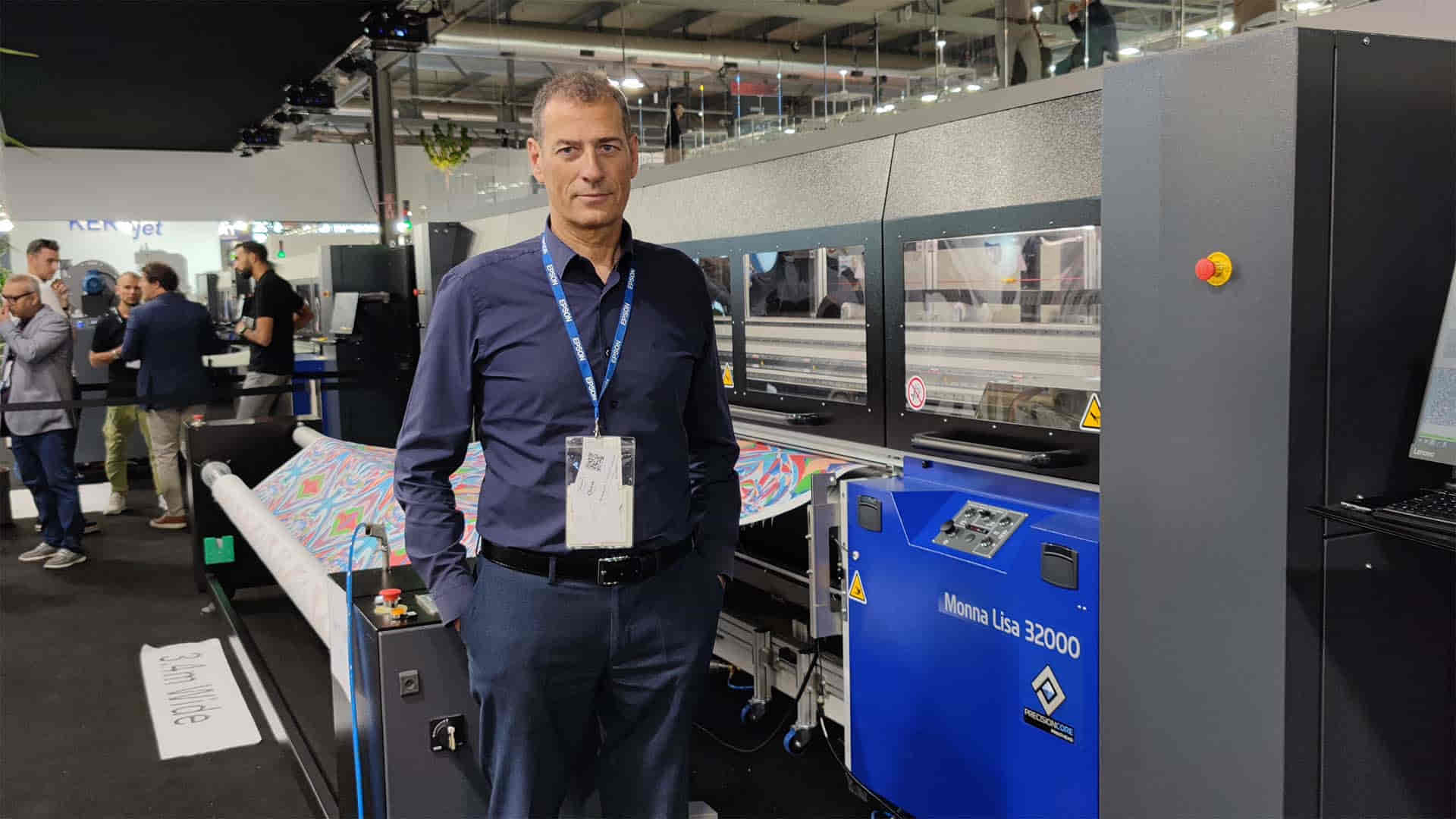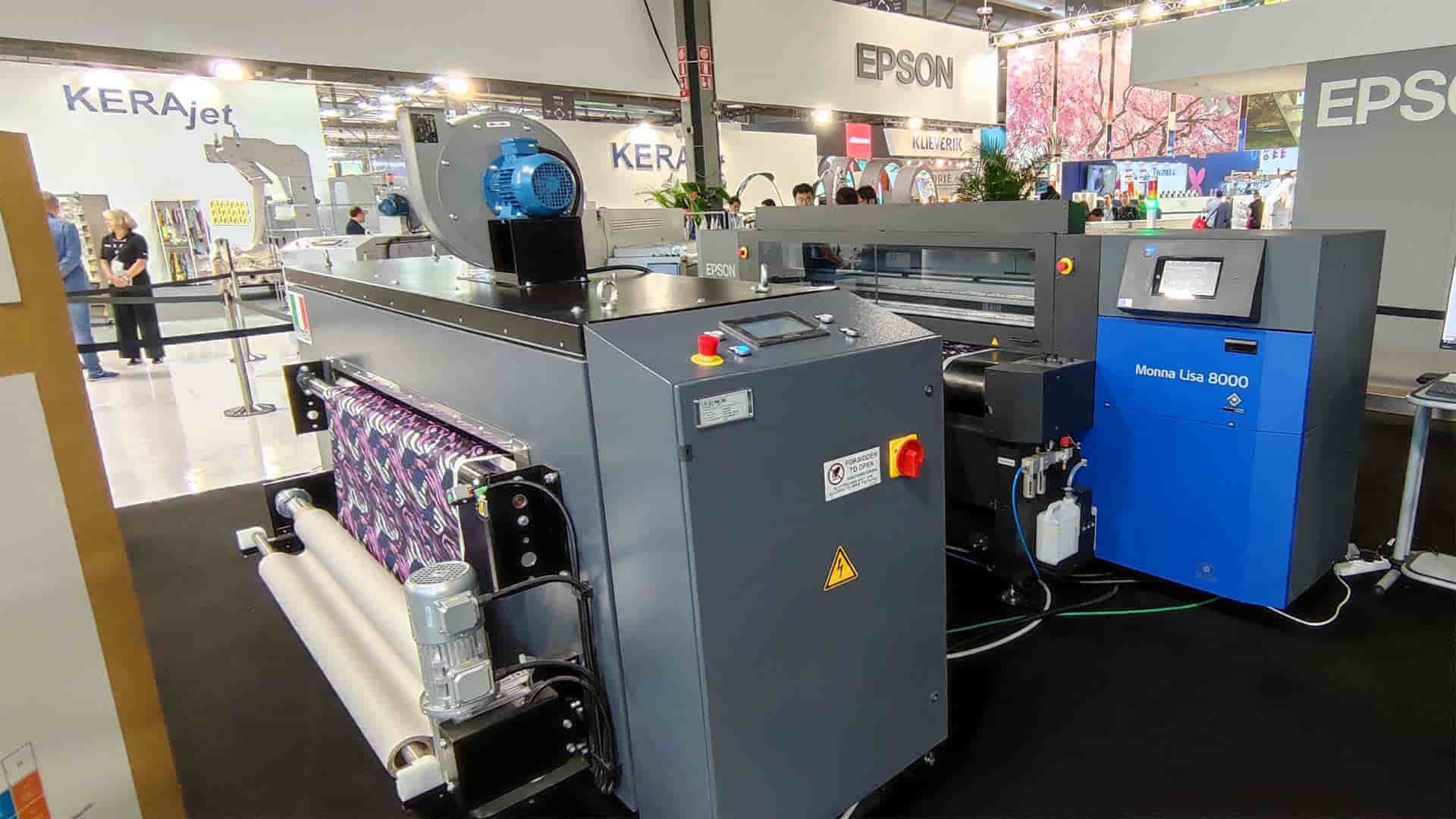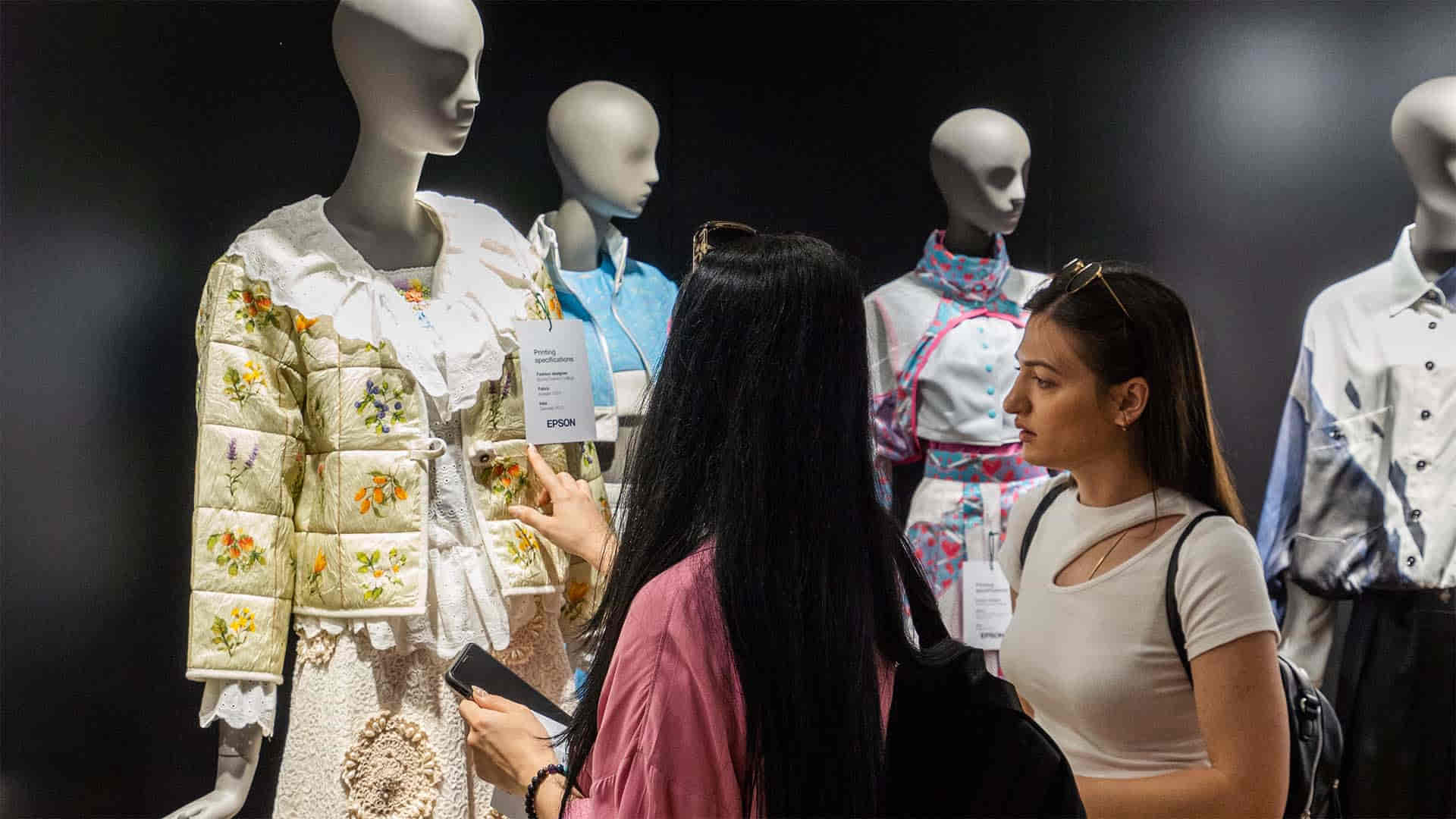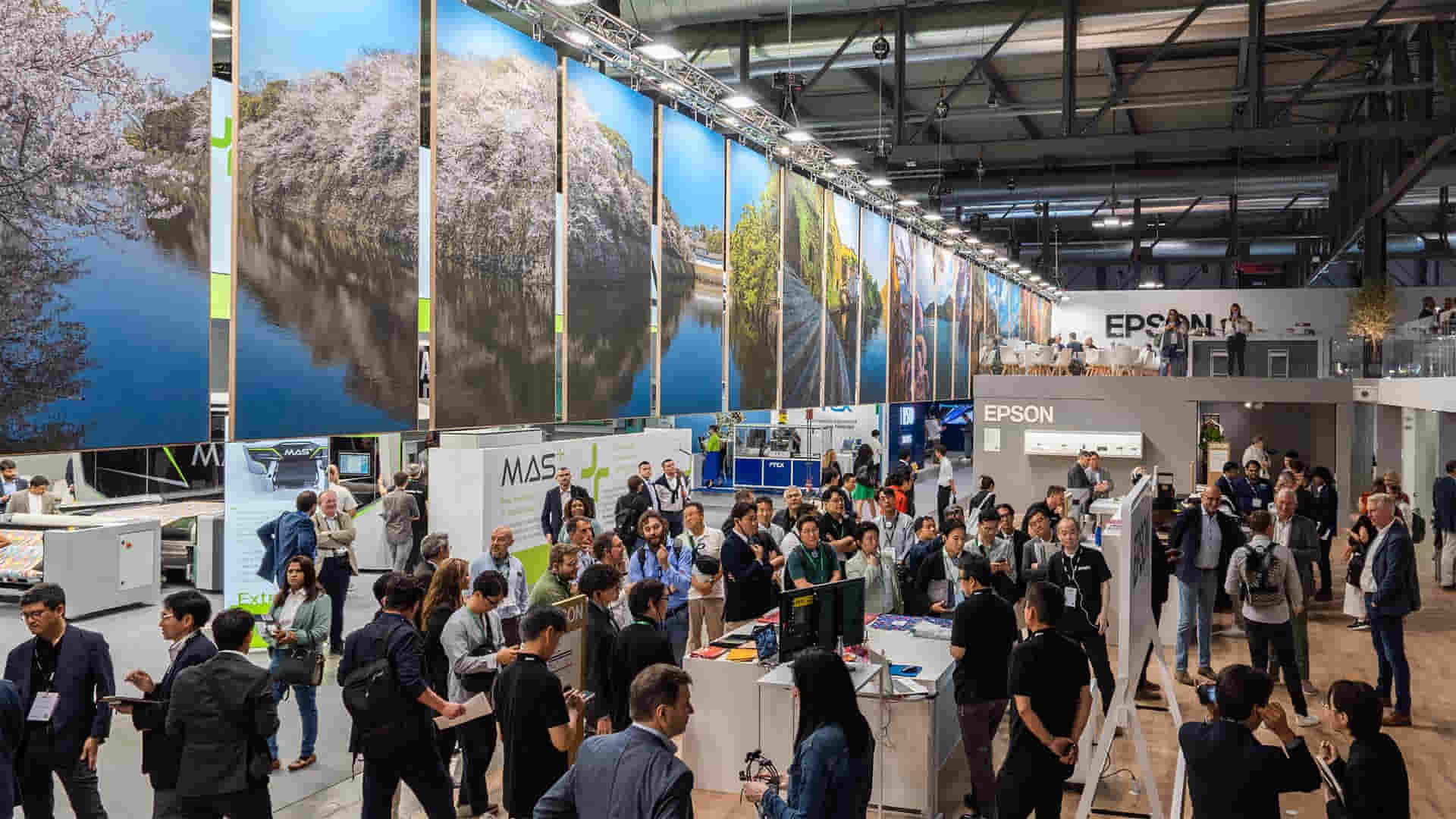Epson made a significant impact in digital textile printing at ITMA 2023 with a strong emphasis on sustainability and technological advancements. Attracting great attention especially with its Monna Lisa series, the company welcomed visitors from all over the world throughout the exhibition. In the interview with Commercial Director of Epson Como Printing Technologies Paolo Crespi, he provided insights into the company’s groundbreaking innovations showcased at the exhibition.
Crespi said that apart from Italy, they have welcomed a very great number of visitors coming from Türkiye and Latin America at their booth. He stated that they had also many visitors from India, and mentioned the importance of India as a growing market for textile printing, attributing it to the country’s increasing digitalization efforts and a rising demand for sustainable and domestically produced textiles.

Epson’s Monna Lisa series make difference in textile printing
Paolo Crespi shared that their booth this time is 100% branded by Epson, symbolizing their complete integration with the Epson family and mentioned their technologies each representing a unique aspect of their commitment to innovation and sustainability. Crespi said that the ‘mini Monna Lisa’, a small-scale unit designed for small production runs, represents the concept of all-in-line printing and underlined that it enables direct pigment printing on various fabrics and fibers without the need for separate pre and post-treatment processes.
Building on this concept, Epson Como Printing Technologies also presented the Monna Lisa ML-13000, a semi-industrial machine that further demonstrated the all-in-line approach with enhanced productivity. Crespi explained: “The Monna Lisa ML-13000 offers efficient printing at a reasonable productivity rate allowing for small-lot production and catering to the evolving needs of the industry.” Epson Como Printing Technologies also showcased the Monna Lisa ML-8000, which featured a new ink configuration capable of delivering vibrant and long-lasting prints on various fibers, including cotton, linen, viscose, silk, and wool.

Flexibility is the key in sustainability
Paolo Crespi emphasised the importance for all the Monna Lisa units to concentrate on the maximum flexibility and stated: “The theme of this year is sustainability. In the scope of producing printers with a capacity of metres of output, it means that you have to produce as better as possible without wasting time, wasting chemicals and wasting space. So, all the printers that we prepare have this concept to be more flexible.”
Crespi also said that the company’s water-based pigment inks offered an eco-friendly alternative while reducing water consumption, chemical usage, and production time. He explained the advantages: “Our pigment inks allow for a more sustainable printing process. They eliminate the need for excessive water consumption and chemical usage traditionally associated with textile printing.”
Desired touch and feel with Epson’s 20 years of experience in pigment printing
When questioned about the touch and feel as the main problem of pigment prints, Paolo Crespi assured that it was not a concern, because they have been printing by pigment for 20 years and they did not have this kind of problem.
He said that during the finishing process, fabric treatments could be applied to achieve the desired characteristics, whether a stiff touch, soft hand feel, or waterproofing and the fabric, explaining: “Once the design is printed, it must be supported by another step, that is the finishing process. During the finishing process, you can do what you would like. You need a very stiff fabric, you put the resin and you have a stiff fabric. For example, you need a very soft hand touch when you are printing in a shirt. You add a softening agent and you have a very soft hand touch. You need also a waterproof agent because it is a cotton fibre for outdoor. So, you finish with the resin or carbon resin for waterproofing.” He added that they have eight colours for the pigment that are really brilliant and deep enough.

Crespi also noted that pigment ink is something that is not new, pigment ink process has a long story of hundreds of years in the conventional printing process and 20 years already in the digital process. He said that the pigment process allows to cut water, chemicals and energy consumption and continued: “The target for us is not only to say go with pigment because everyone goes with pigment. But we are also moving ahead and staying on top of the quality because we can offer this kind of pigment printing together with a special effect that nobody else can do. In the past, some special effects could be printed only by rotary: I mean gold effect or glue for metal foil or matte, resin, glossy resin and more again. Today, we can do it digitally. Monna Lisa ML-16000/HY that we have presented at the exhibition is a great example in this term.”
“Collective effort is essential for sustainability”
Mentioning Epson’s commitment to environmental sustainability, Paolo Crespi reminded that Epson had set a goal to achieve carbon neutrality by 2050. He emphasized the importance of collective efforts in making a significant impact on sustainability, saying: “Of course, this is a big train we have to follow step by step. But it is important to have a target. And everything you are doing now, step by step, will reach this target. If we succeed, even you can succeed. And so probably in 2050, the world will be a little bit better.” Crespi concluded that they eagerly waiting for meeting with the industry again at ITM 2024 in İstanbul and discuss the innovations in textile printing for a more sustainable and better world.

